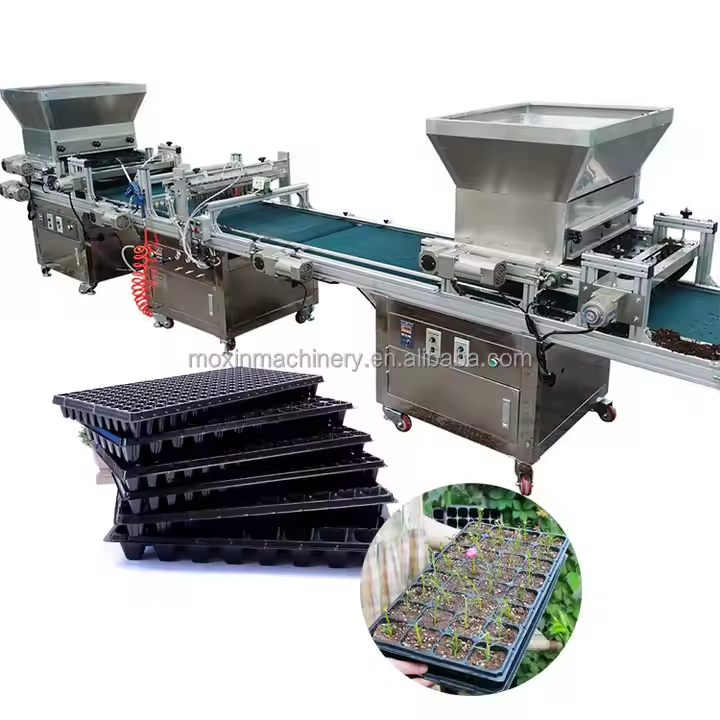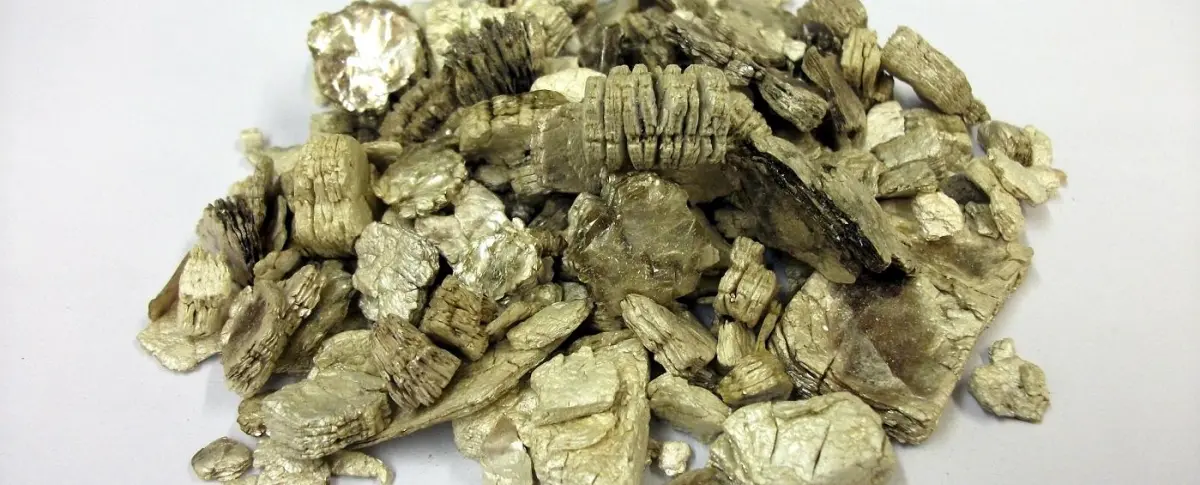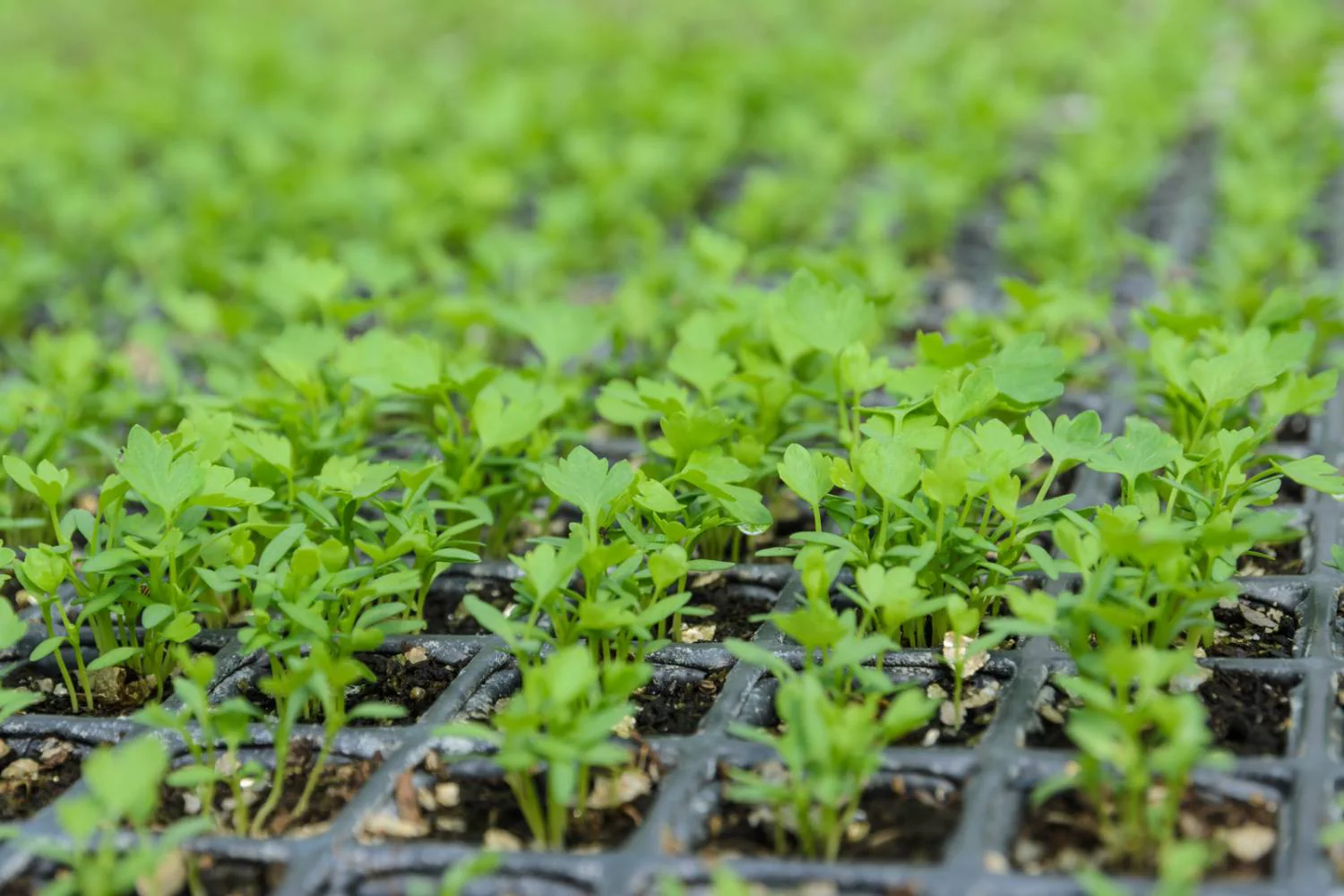
Celery Seeds
You may have never wondered where the celery in your soup comes from—or thought about the tiny seed that grew that stalk. But here, you’ll discover answers to questions you didn’t even know you had.
Automated celery seeding and the early stages of growth.

Turning tiny celery seeds into healthy plants is a surprisingly intricate process. It begins with numerous seed flats and a sophisticated seeding machine. Each flat contains hundreds of small cells, maximizing space and efficiency. Flats are stacked within reach for workers, who place them on a slow-moving conveyor belt. As the flats move along, a separate conveyor fills them with dry, fluffy soil. Rotating brushes sweep away excess soil into a connected bin, ensuring each square is evenly filled. The flats then pass under a roller compactor that gently presses the soil down, creating room for the seeds.
Next, the flats move beneath a wide funnel, which carefully drops a single seed into each square. Using sensors or cameras, the machine precisely controls seed placement as each flat passes below. After seeding, the flats continue under another, larger funnel filled with vermiculite. This lightweight mineral aids in aerating the soil while retaining water and nutrients, making it ideal for seed propagation. The full seed flats are lifted and stacked by an employee. The flats are transported to a greenhouse to be unstacked and laid out. After this they are watered and left to grow. After about twelve weeks of watering, trimming and general maintenance, they are ready to be planted.
Blog on growing celery seeds
Saving your own celery seeds
Public forum on growing celery from a seed

You may have never wondered where the celery in your soup comes from—or thought about the tiny seed that grew that stalk. But here, you’ll discover answers to questions you didn’t even know you had.

What makes vermiculite so good at germinating seeds? Vermiculite is more than just an ordinary mineral. It plays a very important role it the seeding process, and seedling growth.

There are many small-scale processes that must happen between seeding and planting to ensure your crop is stronger and healthier. Here we get into the small but important methods to reap a good crop.